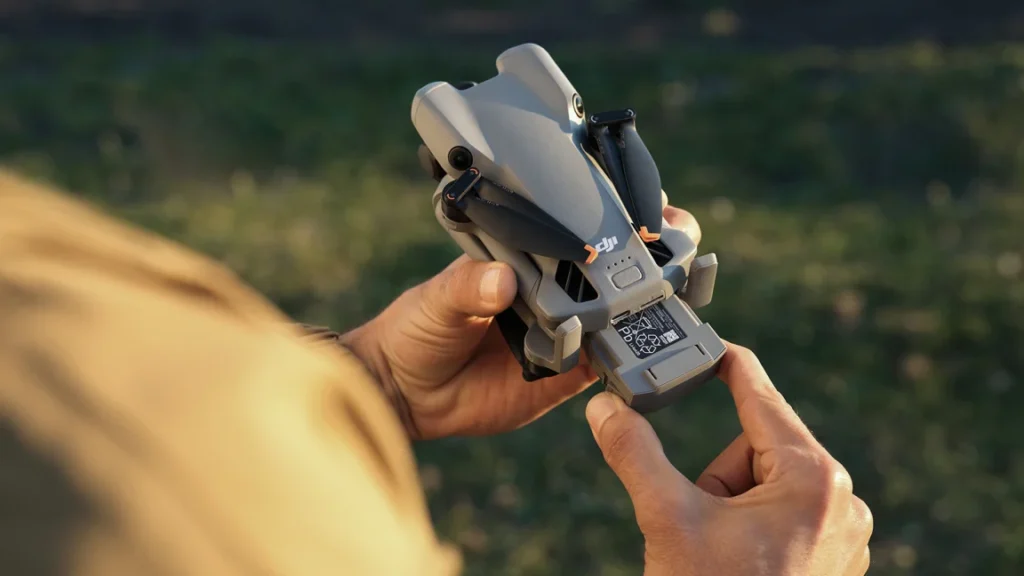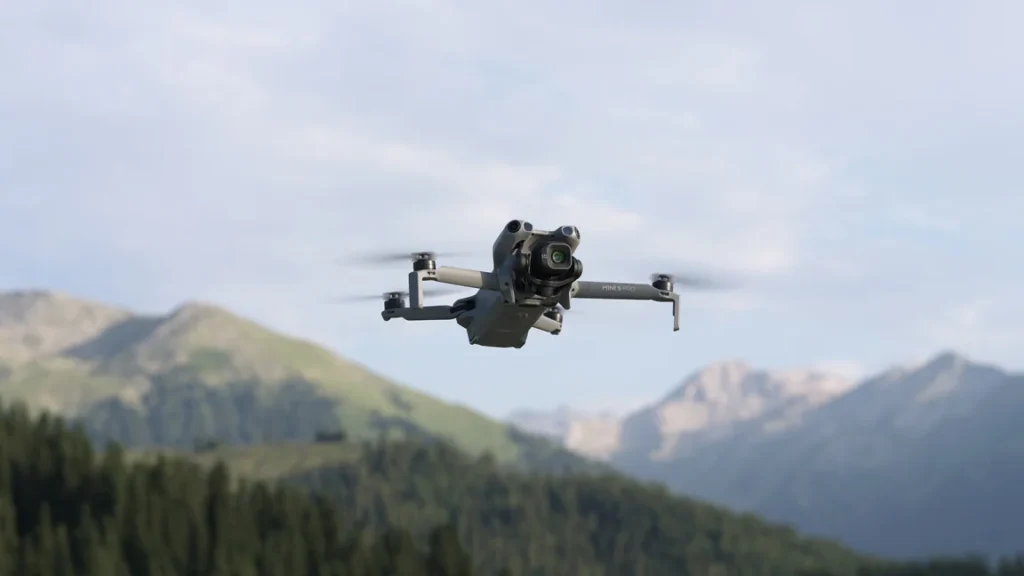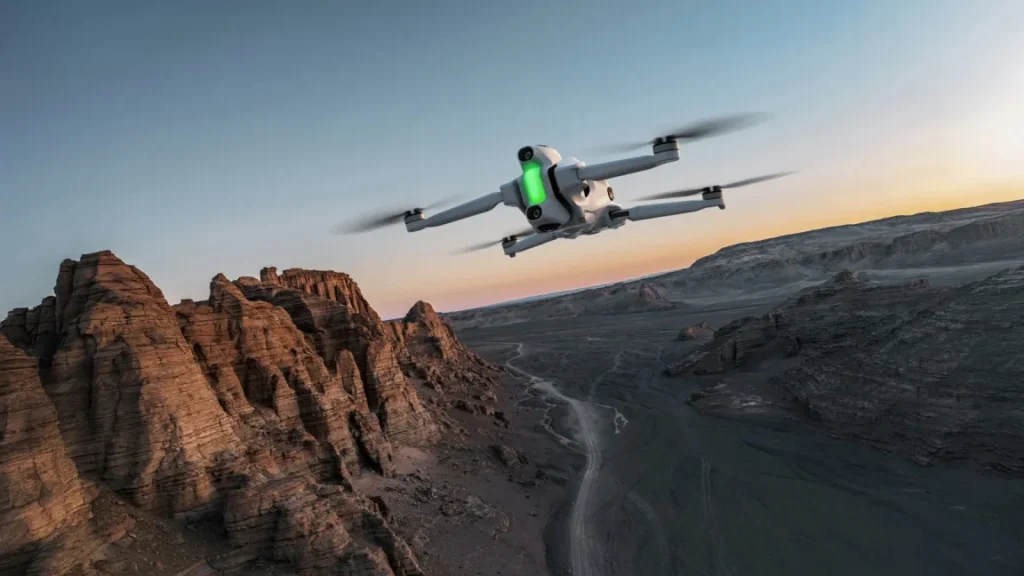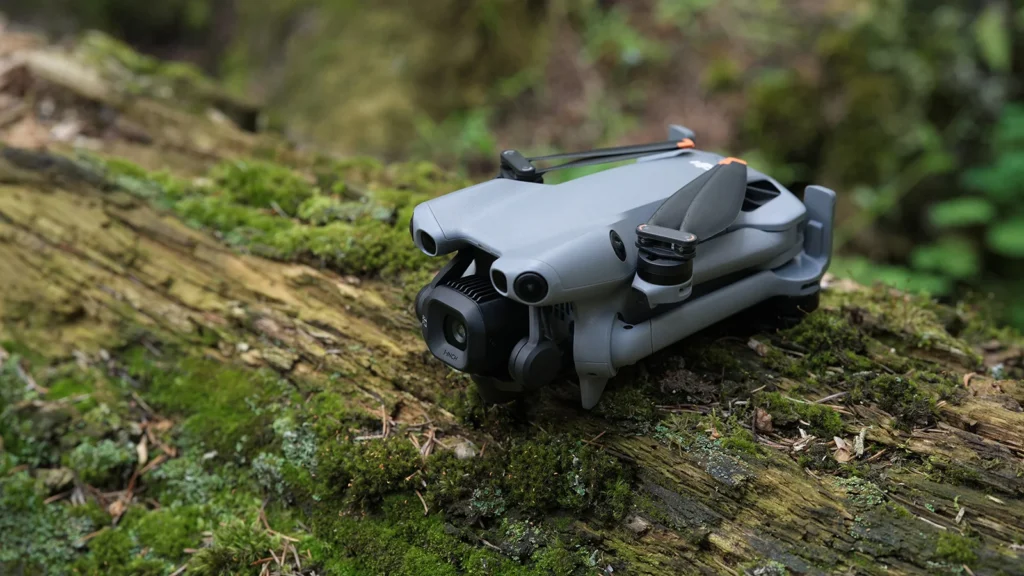DJI has long been the undisputed leader in the world of camera drones. From hobbyists flying over local parks to professional filmmakers capturing breathtaking cinematic shots, DJI drones are everywhere. Now, the company has unveiled its latest masterpiece—the DJI Mini 5 Pro—and it might just be the most powerful drone in the under-250g category. Packed with a brand-new 50MP camera, LiDAR-powered obstacle avoidance, and extended flight time, it promises a level of performance that content creators, photographers, and videographers will find hard to resist.
But here’s the catch—it won’t be hitting US shelves anytime soon.
So, let’s break down everything you need to know about the DJI Mini 5 Pro, from its next-level features to the political storm that’s keeping it away from American buyers.
A Quick History: How DJI Took Over the Skies
Back in 2019, DJI released the Mavic Mini, a featherweight drone that changed the game. The idea was simple but brilliant: create a drone that weighs just under 250 grams. Why 250g? Because in the United States and many other countries, drones lighter than that don’t need government registration and can fly in more places with fewer restrictions.
It was a move that made drones accessible to everyday users who didn’t want to deal with endless paperwork. Since then, DJI has refined the Mini series with each new release, turning it into the go-to choice for anyone who wants pro-level footage without lugging around a massive quadcopter.
The Mini 5 Pro is the latest—and by far the most ambitious—iteration of this series.
The Camera: A Giant Leap in Image Quality

The biggest talking point of the DJI Mini 5 Pro is its 50MP Type 1 image sensor. To put this into perspective, that’s about 65% larger than the sensor on the Mini 4 Pro and on par with the bigger DJI Air 3S. For a drone that still falls into the sub-250g category, this is massive.
This sensor promises sharper details, better low-light performance, and more vibrant colors. If you’re a filmmaker or a photographer, this means you’ll be able to shoot footage that looks like it came from a drone twice its size.
The camera also supports 4K60 HDR video recording, which is a sweet spot for both professionals and hobbyists. Whether you’re shooting cinematic landscapes, fast-action sports, or real estate walkthroughs, the footage will look smooth and stunning.
And then there’s the gimbal—mounted on a 3-axis system that not only stabilizes footage but also offers creative flexibility. The Mini 5 Pro can rotate between portrait and landscape modes, perfect for shooting both cinematic videos and vertical content for platforms like Instagram Reels or TikTok.
But DJI didn’t stop there. The drone introduces a new video move that rotates the gimbal by 225 degrees, opening up camera angles we’ve never seen before in consumer drones. It’s features like this that make DJI so far ahead of the competition.
Smarter and Safer Flights

Flying drones is fun, but it’s also risky—especially for beginners. The Mini 4 Pro already had 360-degree obstacle avoidance, but the Mini 5 Pro takes safety to the next level by adding LiDAR sensors to the front.
Why does this matter? LiDAR technology improves depth sensing, which means the drone can detect objects more accurately, even in low-light conditions like twilight or nighttime flights. This reduces the chances of crashing into trees, poles, or buildings when visibility isn’t perfect.
Another major upgrade is the drone’s ability to remember its current flight path. If it loses GPS signal mid-flight, it can still retrace its steps and return safely to the launch point. That’s a big reassurance for pilots who fly in challenging environments.
Longer Flight Times
Battery life is often the biggest frustration with drones. Just when you’re about to capture the perfect shot, the drone starts beeping to return home. DJI has tackled this head-on with the Mini 5 Pro.
- Standard battery: 36 minutes per charge
- Extended battery: 52 minutes per charge
That’s a noticeable improvement from the Mini 4 Pro’s 45 minutes. Of course, the extended battery pushes the drone slightly over the 249g mark, which could mean stricter rules in some regions. But for professionals, the extra airtime is worth it.
The US Problem: Why You Can’t Buy the Mini 5 Pro

Here’s where things get complicated. The DJI Mini 5 Pro is going on sale internationally, but not in the United States.
This isn’t a one-off issue. Earlier this year, the Mavic 4 Pro also launched globally but skipped the US market. A handful of units did sneak into stores, but most American buyers had to resort to importing them or paying inflated prices on eBay.
To make matters worse, US Customs and Border Protection (CBP) has reportedly started blocking DJI drones from entering the country. One San Francisco-based photographer, Eric Thurber, shared his experience online when his imported Mavic 4 Pro was seized for months before being returned. His story went viral and highlighted just how tough it has become for Americans to legally get their hands on new DJI drones.
Why Is the US Cracking Down on DJI?
The situation boils down to two main issues: human rights concerns and national security fears.
- Human Rights Allegations
The US government has placed DJI on its Entity List, accusing the company of being complicit in the persecution of China’s Uyghur minority. Human rights groups claim Uyghurs are forced into labor and subjected to mass surveillance. The government believes DJI benefits from this system. DJI strongly denies these accusations, insisting its products are made in Shenzhen, far from the Uyghur camps. - National Security Risks
Another concern is whether DJI drones pose a threat to US security. Last year, President Biden signed the National Defense Authorization Act, requiring a full security audit of DJI products. If the audit concludes that DJI drones are a risk, they could end up on the FCC’s Covered List, effectively banning them from being sold in the US.
The deadline for this audit is December 23, 2025, but insiders claim there’s been little progress so far. DJI says it welcomes the scrutiny, while its competitor Autel has already pulled out of the consumer drone market entirely, shifting its focus to industrial drones.
What Happens If DJI Gets Banned?

A full ban on DJI drones would shake the industry to its core. DJI dominates the market because their drones are simply better—better cameras, better reliability, and better flight performance.
Without DJI, consumers would be left with limited choices:
- Potensic Atom 2: A decent budget option but lacking in image quality.
- Insta360 Antigravity A1: An interesting newcomer with a 360-degree camera, but not yet proven for professional use.
- Other brands: Either discontinued (like Sony’s AirPeak S1) or abandoned after one attempt (like GoPro’s Karma).
In short, DJI leaving the US market would be a massive setback for filmmakers, photographers, and even casual users.
Could DJI Still Survive in the US?

Despite all the hurdles, DJI isn’t giving up. Sources say the company is “committed to the US market and doing everything it can to stay in.” There’s always a chance that political negotiations, new legislation, or even a presidential intervention could prevent a full ban.
But as of now, the future looks uncertain. For US buyers, the only real option is to import DJI drones from abroad—knowing full well they might get delayed, taxed, or even confiscated at the border.
Final Thoughts: A Masterpiece Stuck in Limbo
The DJI Mini 5 Pro is easily the best drone in its class. Its camera rivals larger models, its safety features are next-level, and its flight time is longer than ever. For content creators, it’s a dream machine.
But until the political dust settles, US drone enthusiasts may have to keep dreaming. For now, the Mini 5 Pro is a masterpiece you might admire from afar—or risk importing at your own peril.

